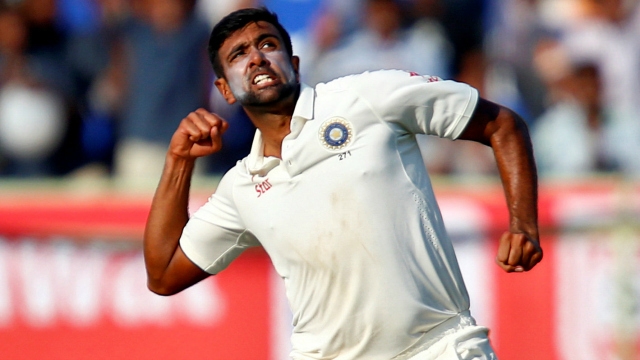Ashwin Best Indian All Rounder Since Kapil Dev
All the praise for Ravichandran Ashwin’s bowling – perfectly understandable given his feats and the impressive stats associated with his name - should not camouflage the fact that he has emerged as the best Indian all rounder since Kapil Dev. And that is perhaps the ultimate tribute to Ashwin’s ubiquitous qualities.
Indian cricket will never see another Kapil Dev. As the only player in Test history to score 5000 runs and take 400 wickets his status in Indian cricket is unique. Since his retirement in 1994 there have been a few with claims to being hailed as genuine all rounders even if they were several notches below Kapil. Manoj Prabhakar played a lot of cricket with Kapil and served Indian cricket admirably with his deeds with both bat and ball.
But after he was hastily discarded after one bad game against Sri Lanka in the 1996 World Cup Indian cricket struggled for a capable all rounder and for long went in with six batsmen and four bowlers in the absence of a player with ubiquitous qualities.
Much was expected from Ajit Agarkar but whatever his achievements in ODIs he never really made the grade in Test cricket despite the odd brilliance – a Test hundred against England at Lord’s in 2002 and playing a major role with the ball in the remarkable victory at Adelaide the following year. Then for some time in the early years of the new millennium Irfan Pathan seemed to be the answer to India’s prayers for a true all rounder.
The performances of the immensely talented left hander were heartening and he seemed to be developing along the right tracks as a bowling all rounder when Greg Chappell as coach promoted him up the batting order. The result was that while his batting improved his bowling fell off. This was needless strategy adopted by Chappell for Pathan was shaping well as a hard hitting late order batsman – good enough to get a Test hundred - to supplement his bowling skills.
Soon the fall in his performances meant that his services were no longer required in Test cricket. He played his last Test in 2008 and after being restricted to limited overs cricket he was omitted altogether in 2012. Still an average of 31 with the bat and 32 with the ball after 29 Tests emphasized what he could have achieved had he been handled in a more adroit manner.
And so the search started again for an all rounder and fortunately it was not a prolonged one. As soon as Ashwin made his debut in 2011 there were signs that in addition to his undoubted bowling skills he could be quite handy with the bat late in the order. After all in first class cricket he had scored a couple of hundreds besides being good enough to open the batting for his club side in Chennai. But could he make a successful transition into becoming a genuine all rounder when it came to international cricket?
Fortunately Ashwin did not take long to show that he had it in enough to emerge as India’s next multi- skilled player. In only his third Test he came up with a hundred from No 8. Moreover a serious approach to batting and his textbook strokes marked him out as someone who could bat higher up the order. But with the middle order having the ''houseful’’ board firmly struck upon it with a number of stalwarts around there was no way he could be accommodated in the middle order.
Not that it bothered Ashwin who was happy taking wickets by the bucketful and adding more than his mite with the bat down the order. But two years later when he got a second hundred again at No 8 the cry for his promotion gained impetus. Moreover this time he shared a record 280-run partnership with Rohit Sharma for the seventh wicket while batting for almost five hours.
While his batting was improving all the time there were fears in some quarters that there might be a dip in his bowling standards. There was no need for such trepidation for Ashwin was obviously made of sterner stuff and he became in fact the fastest Indian to 100 Test wickets.
While getting his first Test hundred in 2011 Ashwin also joined the ranks of all time Indian greats Vinoo Mankad and Polly Umrigar in taking five wickets in an innings. But he went one better a few months ago by achieving the feat for a second time.
Two more hundreds in the series in the West Indies last year meant that Ashwin’s promotion could no longer be kept on hold and he was batting at No 6 – the right place for a genuine all rounder. This also gives the Indian team the option of playing three specialist bowlers or four depending on the surface and the opposition.
At the moment the focus is on Ashwin’s record breaking bowling feats, the twin highlights being the second fastest bowler to take 200 wickets in Test history behind the legendary Australian leg spinner Clarrie Grimmett and the most recent of becoming the fastest to reach 250 wickets surpassing the record set by another famous Australian Dennis Lillee.
But perhaps a closer look at his all round figures will also be in order. At the end of the Test against Bangladesh Ashwin has played 45 matches in which he has scored 1850 runs and taken 254 wickets. He has scored four hundreds and ten fifties and has 24 five-wicket hauls and seven ten-wicket hauls.
Most importantly his batting average is almost 35 and his bowling average 25. The difference leaves no doubt about Ashwin being a genuine all rounder the qualification always being that the batting average should be as high as possible and the bowling average as low as possible.





